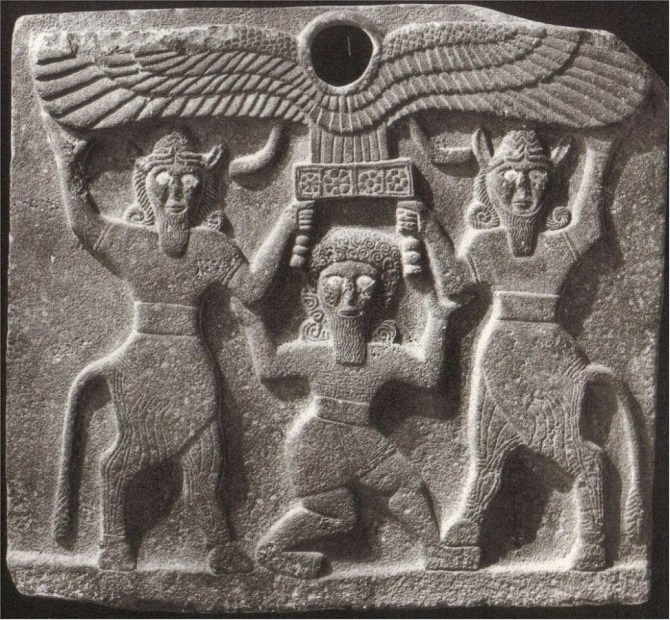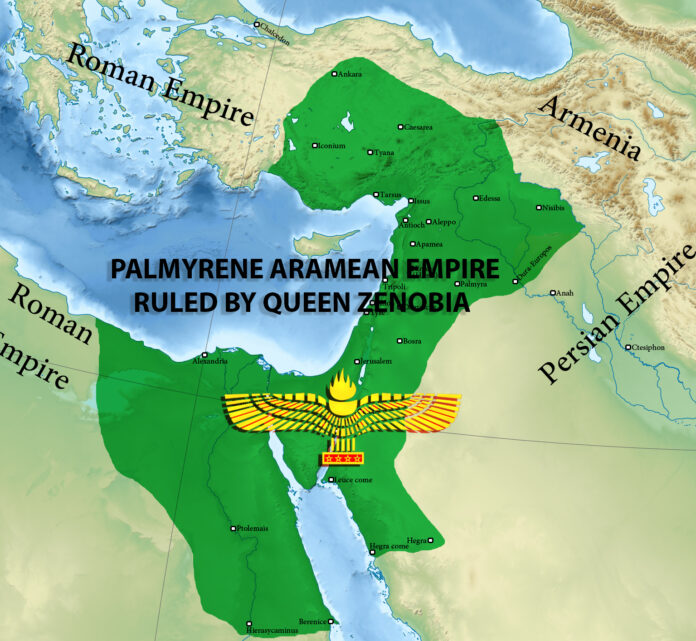On Saturday, October 23, 2010, the Syrianska FC team won its final match in Superettan (Second Swedish league) and became an Allsvenskan (Swedish Premier League) team. All Swedish newspapers wrote about this event, and the topic of “Syrianska” once again became hot, well-known, and relevant. But what is the truth about the people who bear this name? Who are the Syriacs, and what language do they speak and write?
Introduction
The Syriacs are a people who have lived continuously in their traditional settlement areas in the Middle East for three thousand years. They have made significant cultural contributions throughout history. They dominated trade along the ancient Silk Road. Their relatively simple language, Aramaic, with its 22 alphabetical letters, spread rapidly across vast areas of the Middle East and Asia. Several languages at that time were written using the Syriacs’ old, simple alphabet. Many of the world’s alphabets originate from the Syriacs’ ancient Aramaic script. Since the 4th century AD, the Syriacs have lived without their own state.
With the dissolution of the Ottoman Empire after World War I, the victorious powers sought to establish a new order in the Middle East. The colonial powers France and Britain divided the region without regard for ethnic groups. They redrew the map and created new states such as Syria, Iraq, Lebanon, Jordan, etc. The borders that were drawn did not separate “nation-states”; instead, they cut through ethnic groups rather than being drawn between them. The modern borders of the Middle East have fragmented the Syriacs’ land and divided their people, who today live under difficult conditions in several areas.
A Syriac delegation was sent to the peace conferences in Paris after World War I in the hope of regaining historical rights to traditionally Syriac areas. However, the great powers denied the Syriacs these rights. Since the establishment of the new states in the Middle East, all regimes in the region have forced the Syriacs to abandon their culture, language, and national identity. Arabization and Turkification efforts continue at the highest levels. For example, hundreds of Syriac names for villages, fields, rivers, neighborhoods, and regions have been changed to Arabic and Turkish names.

The Aramean name of the Syriacs
While the Syriac people are at least three thousand years old, the term “Syrianska” is only four to five decades old and was coined in Sweden to refer to the “Suryoyo people” who arrived as refugees from Lebanon, Turkey, Syria, Iraq, etc. The name “Syrianska (Syriacs)” was created to replace “Syrian,” which is the traditional Swedish term for the people. However, since “Syrian” also refers to modern citizens of the country Syria, the Suryoyo people refrained from using it and instead adopted the name “Syriacs,” which quickly spread and became recognized in Sweden.
The Syriac Association in Södertälje and the football team were initially called Suryoyo, but in the early 1980s, they began calling themselves Syriacs.
The people known today as “Syriacs” (Suryoye) were previously called Arameans, and their language was Aramaic. The oldest preserved document mentioning the name Aram dates back to the 23rd century BC. The first to refer to the Arameans as Syrians (Syriacs) were probably the Greeks in the 5th century BC. The Greek geographer and historian Strabo (died ca. 23 AD) states in his work Geography (Book 1, Chapter 2, No. 34): “Those who call themselves Arameans, we call Syrians.”
In the Septuagint, the first translation of the Old Testament from Hebrew and Aramaic into Greek (completed in the 3rd century BC), the name “Aram” was translated as “Syria,” “Arameans” as “Syrians,” and the “Aramaic language” as the “Syrian language.” The Septuagint was later translated from Greek into Syriac around 616 AD, helping to spread the name ܣܘܖ̈ܝܝܐ (Suryoye) for those who previously called themselves ܐܖ̈ܡܝܐ (Arameans).
The Arameans themselves continued to call themselves Arameans until the 4th century AD. However, over time, they also began to use the Greek designation Syrians (Suryoye) as a synonym for Arameans, and the term Suryoyo (Syrian) for their language as a synonym for Oromoyo (Aramaic).
In the early centuries AD, most Arameans converted to Christianity. During this period, they referred to themselves with the dual name Suryoye Oromoye (“Syrian-Arameans”), but later on, they more frequently called themselves (Suryaye/Suryoye) than Arameans (Aramaye/Oromoye). In later centuries, the term Suryaye/Suryoye (Syriacs) gradually replaced the older designation Arameans. However, Syriac authors throughout history have used both names synonymously for the same people and language. All medieval Syriac historians who researched Syriac history mention that the Syriacs were previously called Arameans and that their language was Aramaic.
In the following chapters, the terms Arameans, Syrians, and Syriacs will be used to refer to the same people.
The Arameans
The ancient Syriacs (Arameans) had a city-state system. They had dozens of states spread across a vast region that included present-day Syria, Lebanon, Israel, Jordan, all of southern Turkey, Iraq, and western Iran. This area is known as the “Fertile Crescent,” but we call it “Aramea.”
Aramea was not an empire but a region primarily inhabited by Arameans. The “Arameans” were not a homogeneous group. The population was organized into politically independent city-states with their own kings and their own coinage. Among notable Aramean kings during the time of Jesus were King Abgar of Edessa (Urhoy) and King Azizu of Emesa (Hmes, Homs).
Most Aramean states had their own names with the addition of “Aram,” such as Aram Damascus, Aram Soba, Aram Maaka, etc. Other Aramean states had names with the prefix “Beth,” such as Beth Adini, Beth Zamani, Beth Nahrin, etc.
After the fall of the Assyrian Empire in 612 BC, Babylonian Arameans established a great empire in Babylon, known as the “Second Babylonian Empire” or the “Chaldean Empire,” after the Aramean tribe Kaldu. A well-known ruler of this empire was King Nebuchadnezzar (ca. 634–562 BC), who exiled the Jews from Judah to Babylon.
However, this powerful empire did not last long. It was conquered by the Persians in 539 BC. In the Old Testament, one can read extensively about the relationship between the Jews and the Arameans. In fact, according to tradition, the Jews themselves were originally Arameans, especially in their early history. According to Jewish and biblical traditions, the great patriarchs Abraham, Isaac, and Jacob were Arameans (Deuteronomy 26:5 states: “And you shall declare before the Lord: My father was a wandering Aramean…”).
During the 2nd and 1st centuries BC, some Aramean city-states were re-established. However, they did not survive for long, as one by one, they lost their independence in the 3rd century AD. Among the significant states of this period were Nabataea and its capital Petra (in present-day Jordan), Damascus, Emesa, and Palmyra (in Syria), Hatra and Singara (in Iraq), and Edessa (Urfa) and Amed (Diyarbakir) (in Turkey).
From that time until today, the Arameans have been ruled by other groups, including the Romans, Persians, Arabs, Mongols, and Turks.
By Dr. Assad Sauma-Assad

